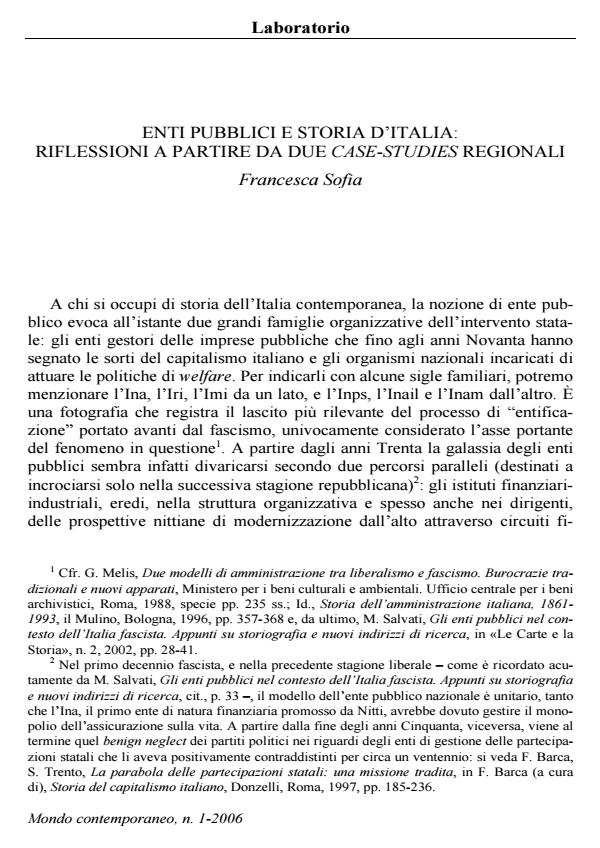Enti pubblici e storia d'Italia: riflessioni a partire da due case-studies regionali
Titolo Rivista MONDO CONTEMPORANEO
Autori/Curatori Francesca Sofia
Anno di pubblicazione 2006 Fascicolo 2006/1
Lingua Italiano Numero pagine 28 P. Dimensione file 134 KB
DOI
Il DOI è il codice a barre della proprietà intellettuale: per saperne di più
clicca qui
Qui sotto puoi vedere in anteprima la prima pagina di questo articolo.
Se questo articolo ti interessa, lo puoi acquistare (e scaricare in formato pdf) seguendo le facili indicazioni per acquistare il download credit. Acquista Download Credits per scaricare questo Articolo in formato PDF

FrancoAngeli è membro della Publishers International Linking Association, Inc (PILA)associazione indipendente e non profit per facilitare (attraverso i servizi tecnologici implementati da CrossRef.org) l’accesso degli studiosi ai contenuti digitali nelle pubblicazioni professionali e scientifiche
For most scholars of contemporary Italy, the term ente pubblico (roughly comparable to Britain’s ‘agencies’) includes only the biggest agencies set up by the Fascist regime: national insurance bodies and state holding companies. Nevertheless, starting from the first years of the past century until the Eighties, the Italian state acknowledged more than 45.000 enti which were active in almost every economic or social field. This essay, after attempting to explain the reason for this lack of memory, focuses on the para-state in two Italian regions, Emilia-Romagna e Puglia. From 1861 to 1978 Emilia-Romagna had 2454 public agencies, Puglia 1551. Their allocation in the different lines of business, the relationship between their growth and that of population, the set of years more meaningful for their birth or suppression, their territorial distribution (with regard to town-country relationship): these are the data analysed in the article. All of them allow to enlarge our knowledge of the Italian social history, and to better understand how the economic and social question of Southern Italy arose.
Francesca Sofia, Enti pubblici e storia d'Italia: riflessioni a partire da due case-studies regionali in "MONDO CONTEMPORANEO" 1/2006, pp , DOI: